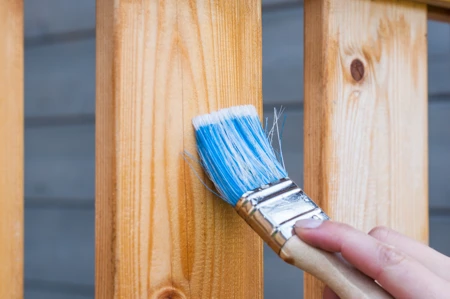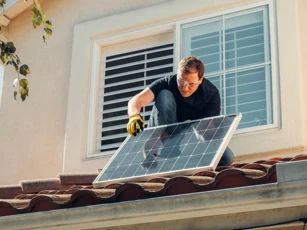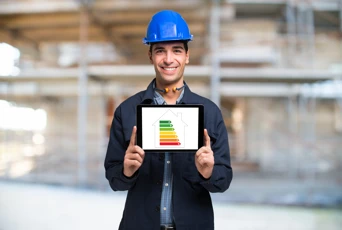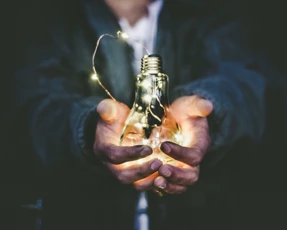In an age where sustainability remains at the forefront of our collective consciousness, the concept of upcycling has emerged as an innovative way to reduce waste. Over the course of this article, we’ll deep dive into exactly what upcycling is, its eco-friendly benefits, and provide you with handy hints and tips to upcycling around your home.
What is upcycling?
Unlike recycling, which involves breaking down materials to create new products, upcycling takes existing items and transforms them into something new without degrading the original materials. Not only does this conserve resources, waste, and pollution, it also encourages creativity - all while allowing you to save your pennies on a brand new item of furniture.
The term ‘upcycling’ has gained popularity in recent years, as more people began to recognise the importance of sustainable living. Essentially, upcycling involves repurposing old or discarded items to give them new life, function, and aesthetic appeal. Instead of tossing items into landfills or incinerators, ‘upcyclers’ see the potential in these objects and transform them into something valuable.
What are the benefits of upcycling?
There are countless benefits to upcycling, including:
-
Waste reduction: Upcycling directly addresses the problem of waste. By salvaging and reinventing items that might otherwise be discarded, upcycling reduces the strain on landfills and lowers the demand for new raw materials
-
Conserves resources: Traditional manufacturing processes consume vast amounts of energy and resources. Upcycling, on the other hand, requires significantly fewer resources since the core material is already in existence
-
Get creative: Upcycling encourages you to embrace your artistic side, providing you with the opportunity to create one-of-a-kind items from previously discarded materials
-
Cost-effective: Instead of purchasing new products, you can refurbish and repurpose existing ones, saving money while reducing your environmental footprint
-
Personalisation: Upcycling allows you to repurpose furniture to match your unique style and needs without the environmental impact of buying new items
Where to begin
Getting started with upcycling is easier than you might think. Begin by identifying items you no longer use but hesitate to discard. This will allow you to assess their potential for transformation and envision how they can be repurposed. You’ll then need to gather basic tools such as sandpaper, paint, glue, and brushes so you can start getting creative.
There are also a wealth of online tutorials and DIY guides for inspiration and step-by-step instructions. Start with simple projects, like painting an old chair or upcycling a wooden crate into storage, and as you gain confidence, you can tackle more ambitious endeavours.
Home:
- Old doors into tables: Transform an old wooden door into a rustic dining table by adding table legs and a protective finish. The door's weathered look can add character to your dining area.
-
Pallet shelves and coffee table: Disassemble wooden pallets and repurpose the boards into wall shelves. Sand and paint them to match your decor for a trendy and functional storage solution. You could also assemble wooden pallets into a rustic coffee table. Sand and finish the pallets to create a unique and budget-friendly centrepiece for your living room.
-
Ladder bookshelf: Repurpose a wooden ladder as a bookshelf. Simply add shelves between the ladder rungs to create a stylish and space-saving bookcase.
-
Windowframe picture display: Use an old window frame with multiple panes to create a decorative picture display. Insert photos, artwork, or decorative paper behind the glass for a vintage look.
-
Drawer planters: Old drawers can become quirky and eye-catching planters for your indoor or outdoor greenery. Paint or decorate them to match your gardening theme.
Garden:
-
Bathtub planter: Turn an old porcelain bathtub into a large and striking outdoor planter. Drill drainage holes in the bottom, fill it with soil, and plant flowers or herbs.
-
Wooden pallet garden: Use wooden pallets to create vertical gardens or raised beds. Pallets are versatile and can be stacked, hung on walls, or placed horizontally as planting platforms.
-
Tyre trellis: Old tyres and bicycle wheels can be used as trellises for climbing plants like vines and beans. Lean them against a wall or fence for a unique garden feature.
-
Teacup bird feeders: Repurpose old teacups and saucers into charming bird feeders. Attach them to a stake or hang them from tree branches to attract birds to your garden.
-
Garden bench from bed frame: An old metal bed frame can be upcycled into a garden bench. Remove the headboard and footboard, add a wooden seat, and paint it for a vintage garden bench.
Interested in getting a green mortgage?
If you’re looking at taking the next step to making your home more energy efficient, you may be interested in what a green mortgage has to offer. Get in touch with our team of mortgage advisers today for an initial free, no obligation consultation. They can talk you through your options when it comes to green mortgages, helping you to determine whether they may be suitable for your needs.
Important information
Your home may be repossessed if you do not keep up repayments on your mortgage.
There may be a fee for mortgage advice. The actual amount you pay will depend on your circumstances. The fee is up to 1% but a typical fee is 0.3% of the amount borrowed.




